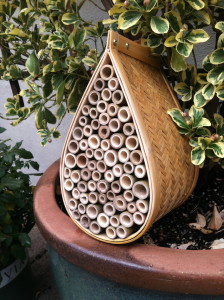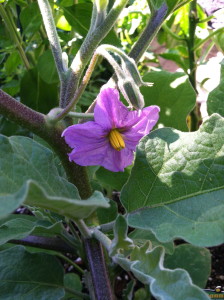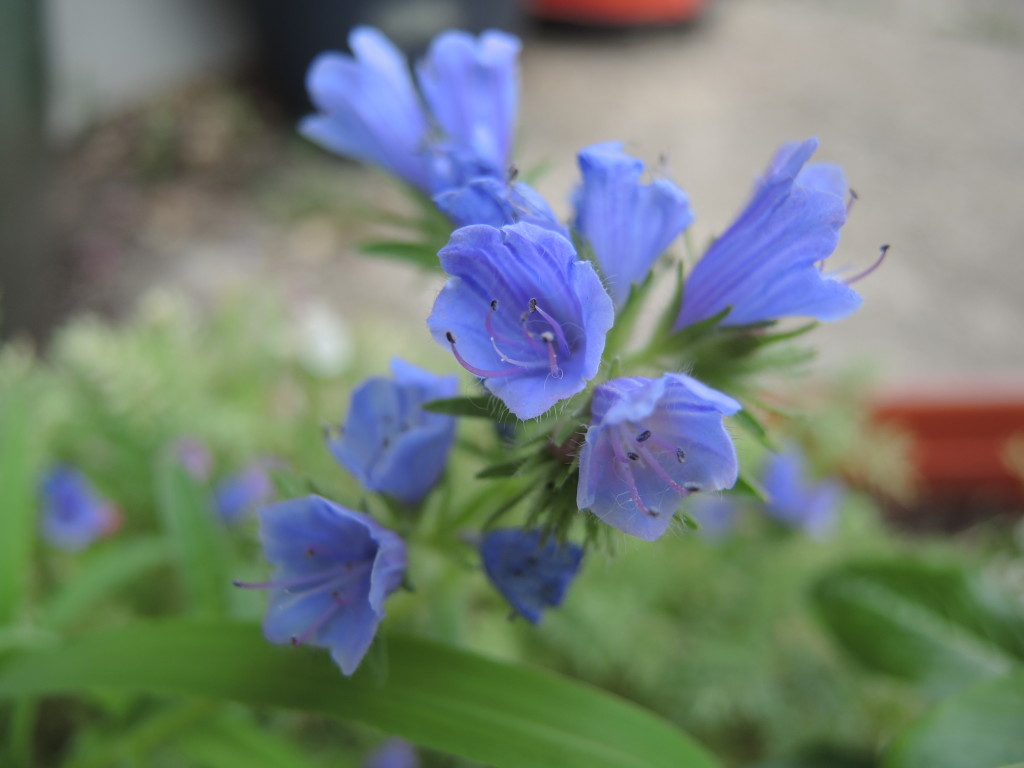 This summer so far has seen plenty of pests—but an appalling lack of pollinators. My mason bee house (right) still stands empty, waiting for occupants. Honeybees have been as rare as $2 bills. Throughout June, the peppers and eggplants produced dozens of flowers, only to have them wither and fall off without producing fruit.
This summer so far has seen plenty of pests—but an appalling lack of pollinators. My mason bee house (right) still stands empty, waiting for occupants. Honeybees have been as rare as $2 bills. Throughout June, the peppers and eggplants produced dozens of flowers, only to have them wither and fall off without producing fruit.
I’ve heard about scientists who pollinate exotic rare flowers by hand. “Brighamia rockii is a tubular, white, Hawaiian flower that grows on vertical cliff faces,” says Marc Hachadourian, curator of the orchid collection at the New York Botanical Garden. “Its pollinator—a type of hawk moth—went extinct. Now people literally rappel up and down cliffs to hand-pollinate them.” If those daredevils could do it, I figured, so could I—and without mountaineering equipment or risk of death. My husband agreed, so we ran upstairs and grabbed a couple Q-tips, then set to work hand-pollinating our pepper and eggplant flowers.
“And how was that for you?” my friend Anne at 14th Street Garden Center asked, when we told her about our exploits.
 We all laughed. But in fact, as my husband observed this afternoon, “It’s not easy to do what a bee does.” We both felt incredibly clumsy wielding Q-tips around the anthers of eggplant flowers (left) and pepper blossoms. How were we supposed to know when we had collected enough pollen on the white cotton tip? How were we supposed to know if we had deposited it successfully on the stigma of the next flower? “Some plants are so specialized that they cannot be pollinated by big bees, only little bees,” says Hachadourian. And we were neither.
We all laughed. But in fact, as my husband observed this afternoon, “It’s not easy to do what a bee does.” We both felt incredibly clumsy wielding Q-tips around the anthers of eggplant flowers (left) and pepper blossoms. How were we supposed to know when we had collected enough pollen on the white cotton tip? How were we supposed to know if we had deposited it successfully on the stigma of the next flower? “Some plants are so specialized that they cannot be pollinated by big bees, only little bees,” says Hachadourian. And we were neither.
We’re not the only ones observing this disturbing lack of pollinators this year. My gardening friends in Hoboken share my concern. Other friends in the country with rows and rows of apple and pear trees note that only a fraction of them are bearing fruit so far. So in my tiny realm, I’m trying to make a bee-friendly environment. I’ve steered clear of all pesticides and chemicals that might harm them. I’ve planted borage, lacy phaecelia, and viper’s bugloss (below), all recommended for bee gardens. I have zinnias and angelonia, butterfly bushes and lantana, calibrachoa and roses. Now where are the bees?

Late August update: My husband and I are better pollinators than we realized. We managed to produce at least a dozen delicious eggplants and peppers–less than last year’s harvest, but better than nothing. And now we are starting to see more honeybees. At last!
